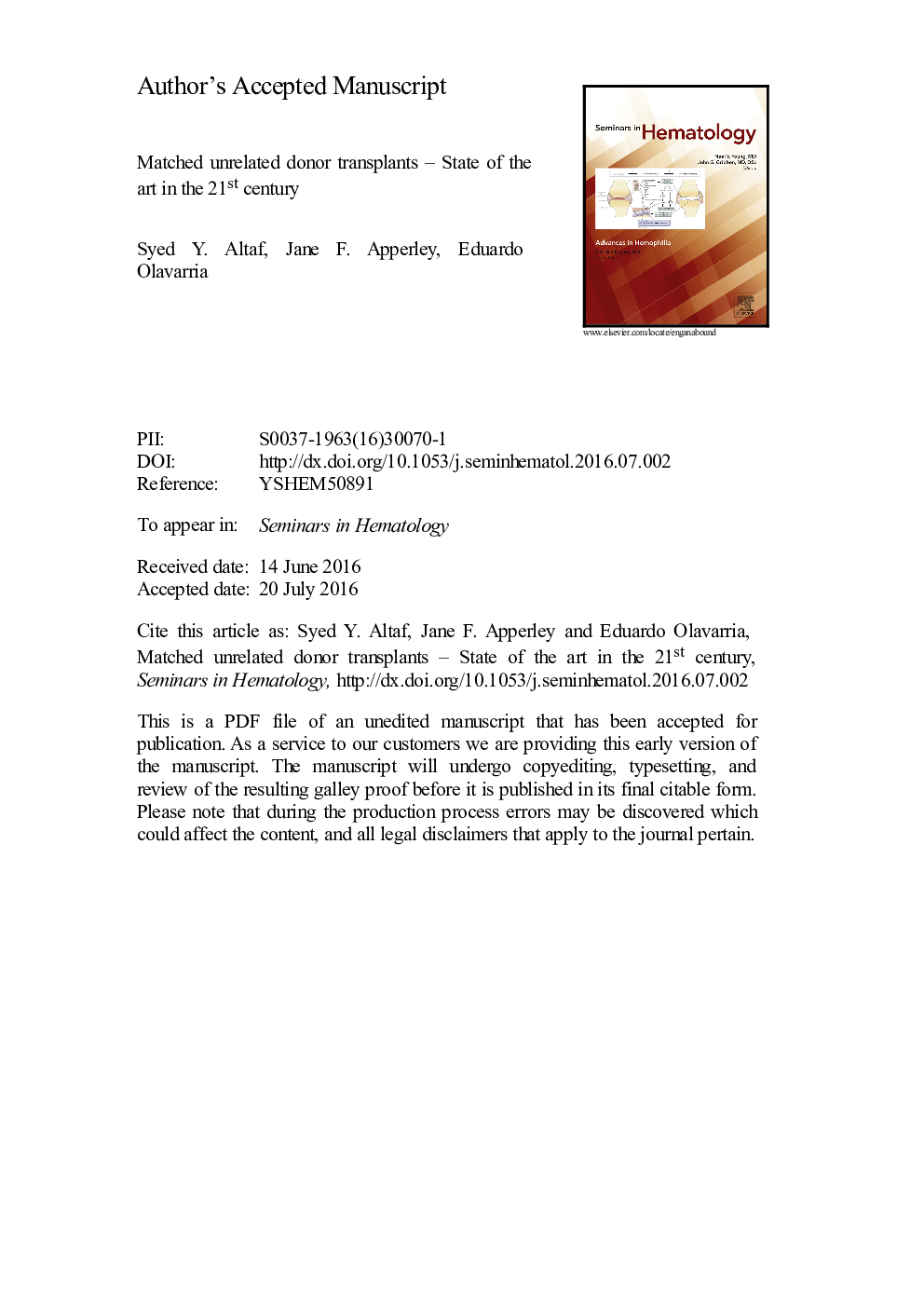| کد مقاله | کد نشریه | سال انتشار | مقاله انگلیسی | نسخه تمام متن |
|---|---|---|---|---|
| 5664433 | 1407707 | 2016 | 33 صفحه PDF | دانلود رایگان |
عنوان انگلیسی مقاله ISI
Matched unrelated donor transplants-State of the art in the 21st century
دانلود مقاله + سفارش ترجمه
دانلود مقاله ISI انگلیسی
رایگان برای ایرانیان
کلمات کلیدی
موضوعات مرتبط
علوم پزشکی و سلامت
پزشکی و دندانپزشکی
هماتولوژی
پیش نمایش صفحه اول مقاله

چکیده انگلیسی
Hematopoietic stem cell transplantation (HSCT) is the therapy of choice in many hematological malignant and non-malignant diseases by using human leukocyte antigen (HLA)-matched siblings as stem cell source but only one third of the patients will have HLA-matched siblings. Hence, physicians rely on the availability of matched unrelated donors (URD). The possibility of finding a matched URD is now more than 70% due to continuous expansion of URD registries around the world. The use of URD in adult patients is steadily increasing and in the last 8 years has superseded the numbers of matched sibling donor transplants and has become the most commonly used stem cell source. There is also an increasing trend to use peripheral blood (PB) stem cells rather than bone marrow (BM) stem cells. Outcomes following URD transplants depend mainly upon the indication and urgency of transplant, age and comorbidities of recipients, cytomegalovirus (CMV) matching/mismatching between donor and the recipient, and degree of HLA matching. In some studies outcome of unrelated stem cell transplants in terms of treatment-related mortality (TRM), disease-free survival (DFS), and overall survival (OS) is comparable to sibling donors.
ناشر
Database: Elsevier - ScienceDirect (ساینس دایرکت)
Journal: Seminars in Hematology - Volume 53, Issue 4, October 2016, Pages 221-229
Journal: Seminars in Hematology - Volume 53, Issue 4, October 2016, Pages 221-229
نویسندگان
Syed Y. Altaf, Jane F. Apperley, Eduardo Olavarria,